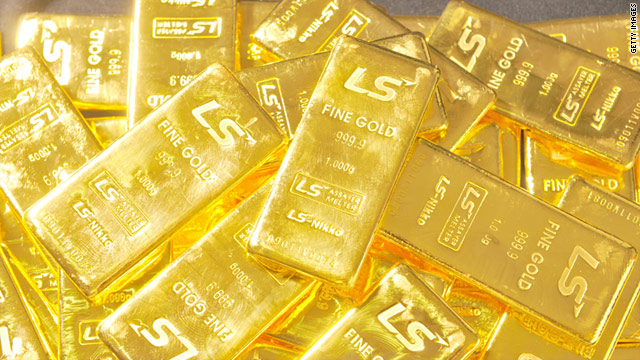Record gold: How high will it go?

So gold has broken the $1600 barrier – a significant price milestone.
But as sure as we talk about it this week, we’ll likely be talking about another hundred-dollar price jump again soon as global investors head for safe havens. That’s because 2011 has been packed with crises of confidence around the world – and we may be in for more.
Simply put, crises are to the price of gold as matches are to bottle rockets: One makes the other go pop.
Major European and U.S.-based economic issues have been the fuel behind gold’s latest push since July 1. Greece, Ireland, Portugal and Italy are dealing with huge sovereign debt issues. Meanwhile, the U.S. faces a partisan stalemate in Washington on the need to raise the debt ceiling to avoid an unprecedented default.
If these problems go unresolved, where would gold go?
Up, up and away, according to Puru Saxena, CEO of Puru Saxena Wealth Management in Hong Kong.
“Gold has now started a new rally and I wouldn't be surprised to see $1750 to $1800 by year end. By next spring, the price of gold could be even higher.”
And we can thank crises of confidence that have pummeled investor faith. Since the start of 2011, the rising price of gold has tracked political, natural and economic storms.
From late January to March, gold jumped nearly 8% as mass uprisings in the Arab world raised fears of oil supply disruptions around the world.
In the month following March 11 – the day of Japan’s historic quake and tsunami – gold rose more than 10% as markets digested the shock to the world’s third-largest economy.
And from July 1 to today, as deadlock in Washington and debt-solution delays in Europe continue, the price of gold has risen yet another 8%.
Just three months ago, on April 20, gold hit its last hundred-dollar barrier of $1500 an ounce. If more crises of confidence hit in the second half of the year, then Saxena’s forecast could come to fruition.
Here’s one scenario that’s not far-fetched at all:
If the U.S. debt ceiling isn’t raised by August 2 – the date when the U.S. would default on its interest payments – global markets would shudder and gold would rise. That would precipitate a U.S. downgrade by credit ratings agencies – and gold would rise. Moody’s and Standard & Poor’s have already put the U.S. on review. On top of that, there’s talk of yet another round of quantitative easing in the U.S. – QE3. That additional liquidity would further weaken the dollar … and gold would rise.
Adds Saxena, “As long as governments continue to bail-out the insolvent and central banks continue to print money and keep interest rates artificially suppressed, precious metals should continue to appreciate.”
So, is it too late to jump into gold before gold takes another jump?
If you’re a bear and believe world financials will get worse before it gets better – and you have $1600 an ounce to spare – then you just might have your answer.
I bought gold when it was $600 an ounce. This is just crazy. With the weakening American dollar and the amount of debt the US government is carrying can will we see the international community going back to the gold standard. If it is not feasible then what must we base our currency on?



Post a Comment